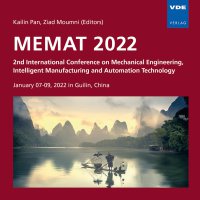Determine the cornering performance of two vehicles by simulating Lane Change and U-Turn motions using Python
Conference: MEMAT 2022 - 2nd International Conference on Mechanical Engineering, Intelligent Manufacturing and Automation Technology
01/07/2022 - 01/09/2022 at Guilin, China
Proceedings: MEMAT 2022
Pages: 8Language: englishTyp: PDF
Authors:
Liu, Chenyu (School of Mechanical Engineering, University of Leeds, Leeds, UK)
Abstract:
So far, plenty of driver assistance tools have been applied to vehicles. And the automotive industry is transforming to a more intelligent level. To achieve these purposes, one essential step is to simulate the motion of a car. This paper is based on a project simulating the U-turn and lane change motions of 2 car models, BMW M3 and Chevrolet Cavalier. Both linear and nonlinear models were analysed, and the trajectories of the motions were plotted using Python. The mathematical methods were mainly based on numerical methods to solve Ordinary Differential Equation (ODE) and Newton’s Second Law. It was found that when the turning angle is relatively large, the nonlinear models are usually more accurate than linear models. For sharp lane changes, the difference in linear and nonlinear models is not significant. But the linear model is more accurate than nonlinear for a sharp U-turn. For the two cars, the BMW appeared to have better performance in sharp turns than the Chevrolet. This project can be used as a basis to complete the vehicle simulations, which may help design some technologies for safety or performance. And it can still be improved by adding more factors to make it closer to reality.


